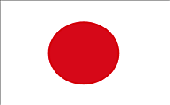Northwest Horticultural Council
Export Manual
JAPAN
 Capital: Tokyo
Capital: TokyoPopulation: 123,201,945 (2024)
Currency: Yen
Official Language(s): Japanese
I. CHEMICAL MAXIMUM RESIDUE LEVELS (MRLs)
Please click on the above link for a list of chemical MRLs.
II. CHEMICALS AND ADDITIVE INFORMATION
A. Chemical residue standards:
Japan maintains a national MRL standard and has a default MRL of 0.01 ppm.
No post-harvest use of any chemical, such as Diphenylamine (DPA), is allowed by Japan, except as authorized by a specific protocol (e.g., methyl bromide) or approved as a food additive by the Ministry of Health, Labor, and Welfare (MHLW).
The following chemicals are approved as food additives (listed with their respective MRLs):
-
-
- Fludioxonil: Cherry – 10 ppm; Apple – 5 ppm
- Propiconazole: Cherry – 4 ppm
- Pyrimethanil: Cherry – 10 ppm; Apple – 14 ppm
-
Food additives: Commodities treated with a food additive must be labeled at retail.
Note: Thiabendazole (TBZ) is not approved as a food additive for apples.
B. Monitoring chemical residues:
Chemicals are very strictly monitored under the Japanese Food Sanitation Law. MHLW tests between 3-10% of imports for anti-microbials, chemical residues, food additives, microorganisms, and fungal toxins.
C. Restrictions on use of waxes:
Fruit waxes are listed on the existing Food Additives list and are not considered injurious to health based on the opinion of the Food Safety Council.
Approved waxes for postharvest use: beeswax, carnauba, lanolin, microcrystalline, montan, lignite, oilseed, candillia, Brazil, paraffin, rice bran, shellac (purified and white), cane, spermaceti, urucury, wood, and white Japanese.
III. ORGANIC FRUIT REGULATIONS
The United States and Japan now have an organic equivalency agreement. Effective January 1, 2014 fruit certified to the U.S. Department of Agriculture organic regulations may be sold as organic in Japan. For details on logos and labeling pertaining to certified organic produce visit the USDA website International Trade Policies: Japan.
IV. TARIFFS
The U.S. – Japan Trade Agreement was signed on October 7, 2019. The text of the Agreement is available on USTR’s website.
Cherries: The tariff rate on cherries is 0% as of April 1, 2023.
Pears: The 5% tariff rate on pears is not reduced under this agreement.
Apples: The tariff rate of 17% on apples will be reduced to the following:
| April 1, 2024 | 5.1% |
| April 1, 2025 | 3.8% |
| April 1, 2026 | 2.5% |
| April 1, 2027 | 1.2% |
| April 1, 2028 | 0.0% |
V. NON-TARIFF BARRIERS
A. Labeling requirements:
The shipping carton should be labeled with:
1. Name of product
2. Country of origin
3. Net weight
Distributors/importers are responsible for labeling product that is intended for sale at retail.
The U.S. Embassy in Tokyo recommends that exporters work closely with their importers to ensure compliance with all labeling regulations.
All food additives and their stated function, whether synthetic or natural, must be listed on the label*. Please note that fungicides applied after harvest are classified as food additives and must be labeled. Contact your importing customer for labeling guidance.
*In the event food additive language is not labeled and the sample tests positive for a food additive, exporters may prepare a compliance letter that provides information on the causes of the violation and the counter-measures the company or industry implemented to prevent future violations. A compliance letter may provide Japan’s Ministry of Health, Labor, and Welfare with sufficient justification to lift heightened inspection sooner than the prescribed number of shipments or time. Click here for more information.
Country-of-origin labeling is required at the retail level.
Japan has a Package Recycling Law that requires paper and plastic packaging to be appropriately labeled and recycled. Compliance with the law is the responsibility of the importer. For details of this law and specific labeling requirements, see the Ministry of Economy, Trade, and Industry’s website.
Nutritional labeling is voluntary in Japan. However, if such labeling is done it must be in Japanese and conform to Japan’s Ministry of Health, Labor, and Welfare guidelines. The U.S. nutrition fact panel is not acceptable.
B. Licenses and quotas:
None.
C. Currency Issues:
None.
D. Pest and plant disease restrictions:
Note: For information on the specific export requirements for cherries and apples, contact Northwest Fruit Exporters or your state’s Department of Agriculture.
Cherries: Packing facilities interested in exporting cherries to Japan should first contact Northwest Fruit Exporters (Northwest Horticultural Council) at 509-453-3193 to obtain a copy of the work plan and relevant regulations.
Cherries can be sent following fumigation with methyl bromide prior to shipment or under a systems approach for codling moth.
Apples: Packing facilities interested in exporting apples to Japan should first contact Northwest Fruit Exporters (Northwest Horticultural Council) at 509-453-3193 to obtain a copy of the work plan and relevant regulations.
Apples must be treated with a 55-day cold treatment and methyl bromide fumigation.
Japan limits the import of U.S. fresh apples to the following varieties: Red Delicious, Golden Delicious, Gala, Jonagold, Fuji, Granny Smith, and Braeburn. Other varieties may qualify for export to Japan if the fumigation is monitored by USDA Animal and Plant Health Inspection Service (APHIS), using methyl bromide measuring equipment.
Pears: Imports of U.S. pears into Japan are prohibited for plant quarantine reasons such as fire blight.
E. Other trade restrictions:
Japan requires the ocean vessel operator or the non-vessel operating common carrier (NVOCC) to electronically file advance cargo information 24 hours prior to the maritime vessel’s departure from the loading port. More information can be found on Japan’s Customs website.

